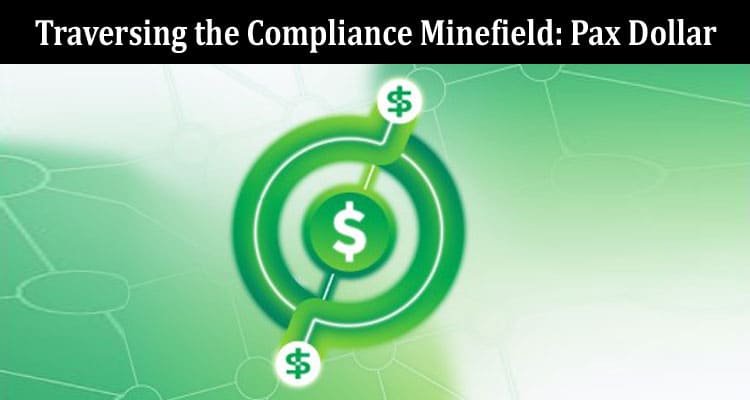In the ever-changing financial landscape, understanding and navigating the regulatory environment is crucial. In this article on “Pax Dollar: Navigating the Regulatory Landscape,” we delve into the challenges faced by businesses and individuals. It’s time to trade crypto with full confidence using automated AI tools at this site today!
Regulatory Challenges in Adopting Pax Dollar
When it comes to adopting Pax Dollar, businesses and individuals face a myriad of regulatory challenges that must be addressed. One of the primary concerns is the legal and compliance considerations associated with the introduction of a digital currency solution. As Pax Dollar operates within the financial industry, it is subject to various regulations imposed by regulatory bodies.
Navigating the regulatory landscape requires a comprehensive understanding of the existing rules and guidelines. Businesses must ensure that they comply with anti-money laundering (AML) and know-your-customer (KYC) regulations to prevent illicit activities and maintain transparency in their operations. This includes implementing robust AML/KYC procedures and conducting thorough due diligence on users and transactions involving Pax Dollar.
Furthermore, businesses need to assess the impact of Pax Dollar on existing financial regulations. As digital currencies are relatively new, the regulatory framework surrounding them is constantly evolving. Adapting to these changes can be challenging, especially for businesses that operate across multiple jurisdictions with varying regulatory requirements.
Another regulatory challenge is related to data protection and privacy. As Pax Dollar involves the collection and storage of user data, businesses must adhere to data protection laws to ensure the privacy and security of their customers’ information. This includes implementing stringent data protection measures, obtaining necessary consents, and complying with regulations like the General Data Protection Regulation (GDPR).
Moreover, regulatory compliance is an ongoing process. As regulations evolve, businesses must stay updated and adapt their practices accordingly. This requires continuous monitoring of regulatory changes, engaging with regulatory authorities, and implementing necessary adjustments to ensure compliance.
The complexities of regulatory challenges can also be a barrier to adoption for individuals. Understanding and adhering to the regulatory requirements of Pax Dollar usage can be daunting, especially for those unfamiliar with the financial industry’s intricacies. Individuals must educate themselves on the legal obligations, risks, and compliance measures associated with using Pax Dollar to safeguard their assets and transactions.
Navigating Regulatory Compliance
One key aspect of navigating regulatory compliance is establishing robust internal processes and procedures. Businesses should develop comprehensive compliance frameworks that outline the steps and protocols necessary to meet regulatory obligations. This includes establishing clear guidelines for user onboarding, transaction monitoring, and record-keeping practices. By implementing these procedures, businesses can demonstrate their commitment to compliance and mitigate the risk of regulatory breaches.
Another crucial aspect is conducting thorough due diligence on business partners and service providers. When integrating Pax Dollar into their operations, businesses must carefully vet and select partners who uphold similar compliance standards. This includes conducting background checks, verifying licenses and certifications, and assessing the reputation and track record of potential partners. By engaging with trustworthy and compliant entities, businesses can minimize the risk of non-compliance and potential regulatory sanctions.
Ongoing monitoring and risk assessment are also vital components of navigating regulatory compliance. Businesses should regularly review their compliance processes and update them to align with any regulatory changes. This includes staying updated on new regulations, guidelines, and industry best practices. By continuously monitoring the regulatory landscape, businesses can adapt their compliance efforts accordingly and proactively address any potential compliance gaps.
Education and training are crucial for both businesses and individuals in navigating regulatory compliance. Organizations should invest in training programs to ensure that employees are knowledgeable about regulatory requirements and understand their roles and responsibilities in maintaining compliance. Similarly, individuals using Pax Dollar should educate themselves on the regulatory obligations and best practices to protect their own interests and ensure compliance with applicable laws.
Collaboration and engagement with regulatory authorities are also essential. Businesses should actively participate in industry forums, engage in dialogue with regulatory bodies, and seek clarification on any uncertainties or gray areas in the regulatory framework. By fostering open communication and collaboration, businesses can better understand regulatory expectations and contribute to shaping the regulatory landscape in a way that supports innovation and compliance.
Lastly, leveraging technology can streamline regulatory compliance efforts. Businesses can utilize advanced compliance tools and technologies that automate processes such as identity verification, transaction monitoring, and regulatory reporting. These technologies can enhance efficiency, accuracy, and scalability in compliance operations, freeing up resources to focus on higher-value compliance activities.
Conclusion
As we conclude our expert documentary on “Pax Dollar: Navigating the Regulatory Landscape,” it becomes evident that embracing digital currencies requires a deep understanding of regulatory requirements. By navigating the complex landscape and adopting solutions like Pax Dollar, businesses and individuals can ensure compliance while unlocking new avenues in the evolving financial industry.


